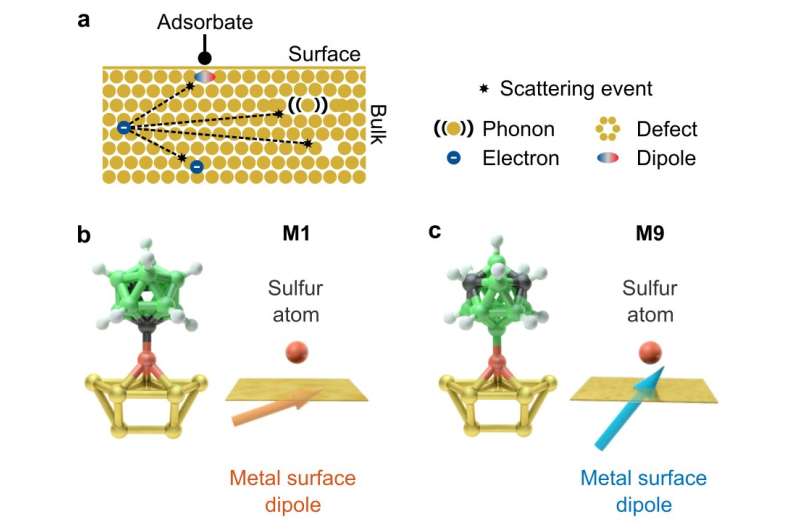Driving chemical reactions with light

The chemistry of photosynthesis is still poorly understood. However, researchers from Johannes Gutenberg University Mainz (JGU) in Germany and Rice University in Houston have now uncovered a major piece of the puzzle. Their findings have been published recently in Science Advances.
Trees, bushes and other plants are extremely efficient in converting water and carbon dioxide into oxygen and glucose, a type of sugar, by means of photosynthesis. Knowing the fundamental physical mechanisms involved and harnessing them for other general applications would provide huge benefits for mankind. The energy of sunlight could be used to generate hydrogen from water as a fuel for automobiles, for example. Using light-driven processes like those involved in photosynthesis in chemical reactions is called photocatalysis.
Plasmons: Electrons oscillating in synchrony
Scientists commonly use metallic nanoparticles to capture and harness light for chemical processes. Exposing nanoparticles to light in photocatalysis forms so-called plasmons. Plasmons are collective oscillations of free electrons in the material. "Plasmons act like antennas for visible light," explained Professor Carsten Sönnichsen of Mainz University. However, the physical processes involved in photocatalysis involving such nano-antennas have yet to be understood in detail. The teams at JGU and Rice University have now shed some light on this enigma.
Graduate student Benjamin Förster and his supervisor Carsten Sönnichsen have been investigating this process more extensively. Förster primarily concentrated on determining how illuminated plasmons reflect light and at what intensity. His technique employed two very particular thiol isomers, molecules whose structures are arranged as a cage of carbon atoms. Within the cage-like structure of the molecules are two boron atoms. By altering the positions of the boron atoms in the two isomers, the researchers were able to vary the dipole moments, in other words, the spatial charge separation over the cages.
This led to an interesting discovery: If they applied the two types of cages to the surface of metal nanoparticles and excited plasmons using light, the plasmons reflected different amounts of light depending on which cage was currently on the surface. In short, the chemical nature of the molecules located on the surface of gold nanoparticles influenced the local resonance of the plasmons because the molecules also alter the electronic structure of the gold nanoparticles.
More information: Benjamin Foerster et al, Plasmon damping depends on the chemical nature of the nanoparticle interface, Science Advances (2019). DOI: 10.1126/sciadv.aav0704
Journal information: Science Advances
Provided by Universitaet Mainz




















